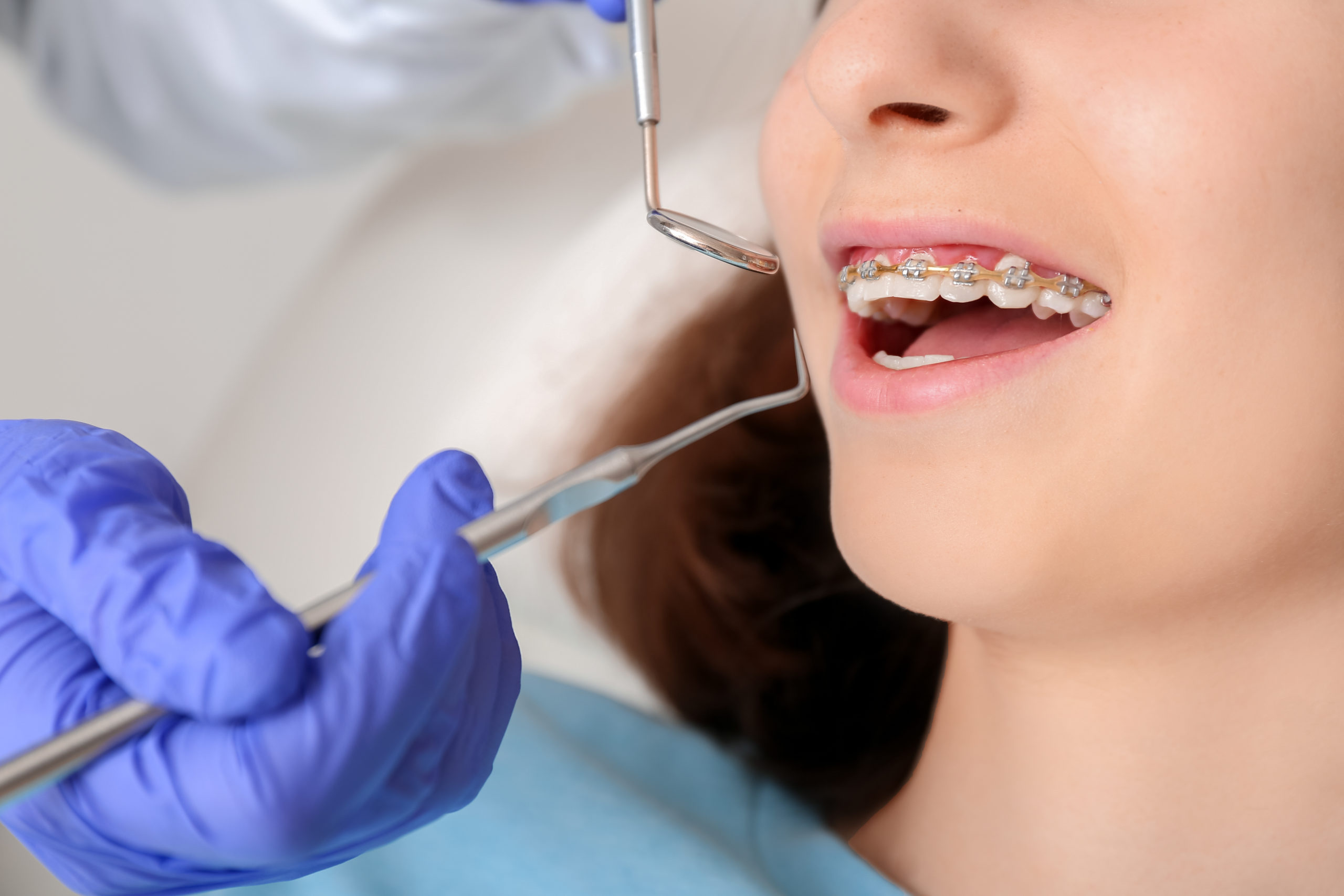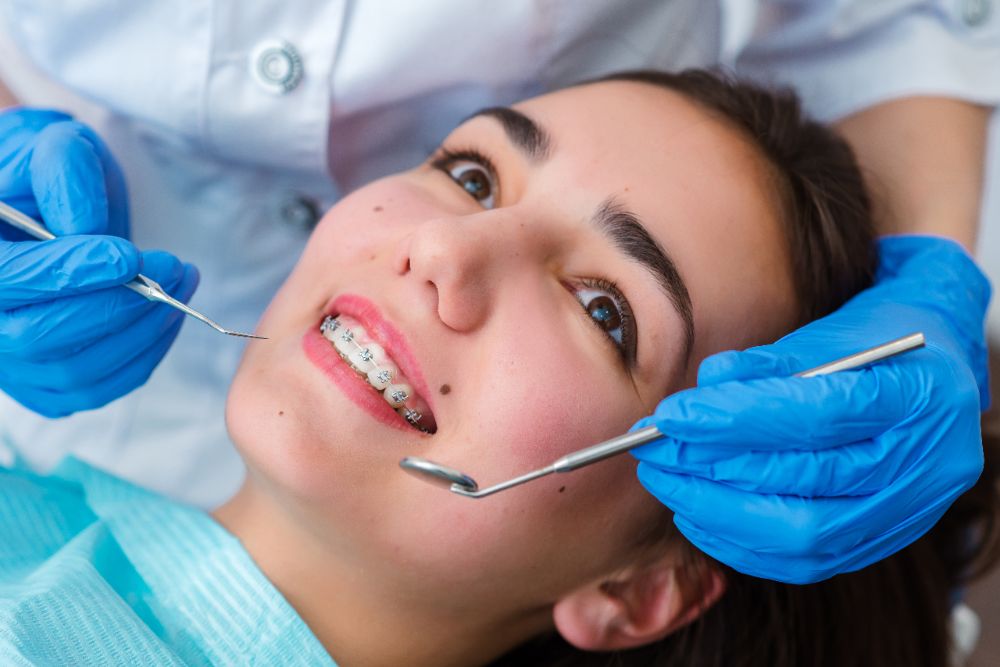Comprehensive Overview to Orthodontics Procedures for Fixing Oral Imbalances
In the realm of orthodontics, the journey to achieving a flawlessly straightened smile entails a myriad of procedures customized to correct dental imbalances. From standard braces to undetectable aligners and even surgical alternatives, the area of orthodontics offers a series of solutions to deal with differing degrees of dental abnormalities. Comprehending the complexities of each procedure, including their systems, benefits, and possible disadvantages, is vital in making educated choices regarding one's orthodontic treatment. As we browse through the thorough overview to orthodontic procedures for dealing with oral misalignments, the complex details of each approach will unravel, clarifying the path toward a harmonious and practical oral placement.
Orthodontic Procedures Introduction

In addition to clear aligners and conventional braces, orthodontists may also advise other treatments like headwear, palatal expanders, or retainers to resolve details alignment concerns (cumming braces). These treatments are customized per patient's one-of-a-kind demands and may involve a mix of treatments to achieve the preferred outcomes. Regular changes and monitoring are crucial components of orthodontic therapy to guarantee progress is on track and to make any required modifications in the process. By going through orthodontic treatments, people can not only achieve a straighter smile however likewise boost their total oral health and wellness and feature.
Traditional Braces: Just How They Function
When taking into consideration orthodontic therapies for oral imbalances, traditional dental braces stand apart as a time-tested approach for fixing teeth positioning. Typical dental braces include braces, cables, and bands that interact to use continuous pressure on the teeth, progressively moving them into the preferred placement. The braces are affixed to the teeth using an unique adhesive, and the cords are threaded via the braces. By readjusting the stress of the cords, orthodontists can manage the direction and pressure related to each tooth, assisting them into appropriate alignment over time.
As pressure is used to the teeth with the braces, the bone bordering the teeth is reshaped to sustain the new tooth settings. Clients will certainly need routine modifications at the orthodontist's workplace to ensure the braces proceed to use the correct pressure for reliable teeth activity.
Invisible Aligners: Pros and Disadvantages
Invisible aligners supply a very discreet and convenient option to typical braces for fixing dental imbalances. These clear, customized trays are virtually unnoticeable when put on, making them an appealing choice for people looking for a more aesthetically pleasing orthodontic treatment. Among the key advantages of invisible aligners is their removability, permitting simpler upkeep of oral hygiene contrasted to typical braces. Clients can eliminate the aligners before eating or brushing their teeth, reducing the threat of food obtaining stuck in the appliance and simplifying the cleansing process.

Surgical Orthodontic Options
Surgical treatments in orthodontics present practical choices for dealing with complicated dental misalignments that might not be effectively fixed via conventional orthodontic treatments. While standard braces and invisible aligners can why not find out more deal with many orthodontic concerns, particular situations call for surgical treatment to attain ideal results. Surgical orthodontic alternatives are typically suggested for serious malocclusions, substantial jaw discrepancies, and instances where the underlying bone framework requires adjustment to attain proper placement.
One typical medical orthodontic treatment is orthognathic surgery, which includes rearranging the jaws to deal with functional problems such as difficulty speaking or chewing. This surgical procedure is usually carried out in cooperation with an orthodontist that assists straighten the teeth prior to and after the treatment. Surgical orthodontics may additionally include treatments to reveal impacted teeth, get rid of excess gum cells, or improve the jawbone to develop a much more unified facial profile.
Prior to thinking about medical orthodontic options, patients undertake a comprehensive examination to identify the requirement and possible benefits of such treatments. aligners. While surgical procedure may seem daunting, it can substantially boost both the function and aesthetic appeals of the smile in situations where traditional orthodontic therapies fall short
Retainers and Post-Treatment Care

Post-treatment treatment entails adhering to the orthodontist's guidelines faithfully. This may consist of proper dental hygiene methods, participating in follow-up appointments, and putting on the retainers as prescribed. Failure important source to follow post-treatment care guidelines Discover More Here can cause relapse, where the teeth gradually return in the direction of their initial positions. Consistent retainer wear, good oral health, and normal dental check-ups are crucial for keeping the results achieved with orthodontic surgery and making certain the long-term security of the fixed dental placement.
Verdict
In verdict, orthodontic procedures provide different alternatives for remedying dental misalignments. Surgical orthodontic options are available for more extreme imbalances. On the whole, orthodontic procedures can effectively improve oral health and aesthetic look.
As we browse with the thorough overview to orthodontic procedures for remedying oral misalignments, the complex information of each technique will certainly unravel, losing light on the course toward a useful and harmonious oral alignment. - cumming invisalign
One of the most common orthodontic therapies is the usage of dental braces, which are composed of steel braces and cords that use gentle stress to slowly move teeth into the desired placement.When thinking about orthodontic therapies for oral imbalances, traditional dental braces stand out as a reliable approach for dealing with teeth placing. Additionally, unnoticeable aligners might not be appropriate for complicated orthodontic concerns that call for even more significant teeth movement, as they are generally advised for moderate to moderate instances. Retainers are tailor-made orthodontic tools designed to hold teeth in their dealt with positions after the conclusion of orthodontic treatment.